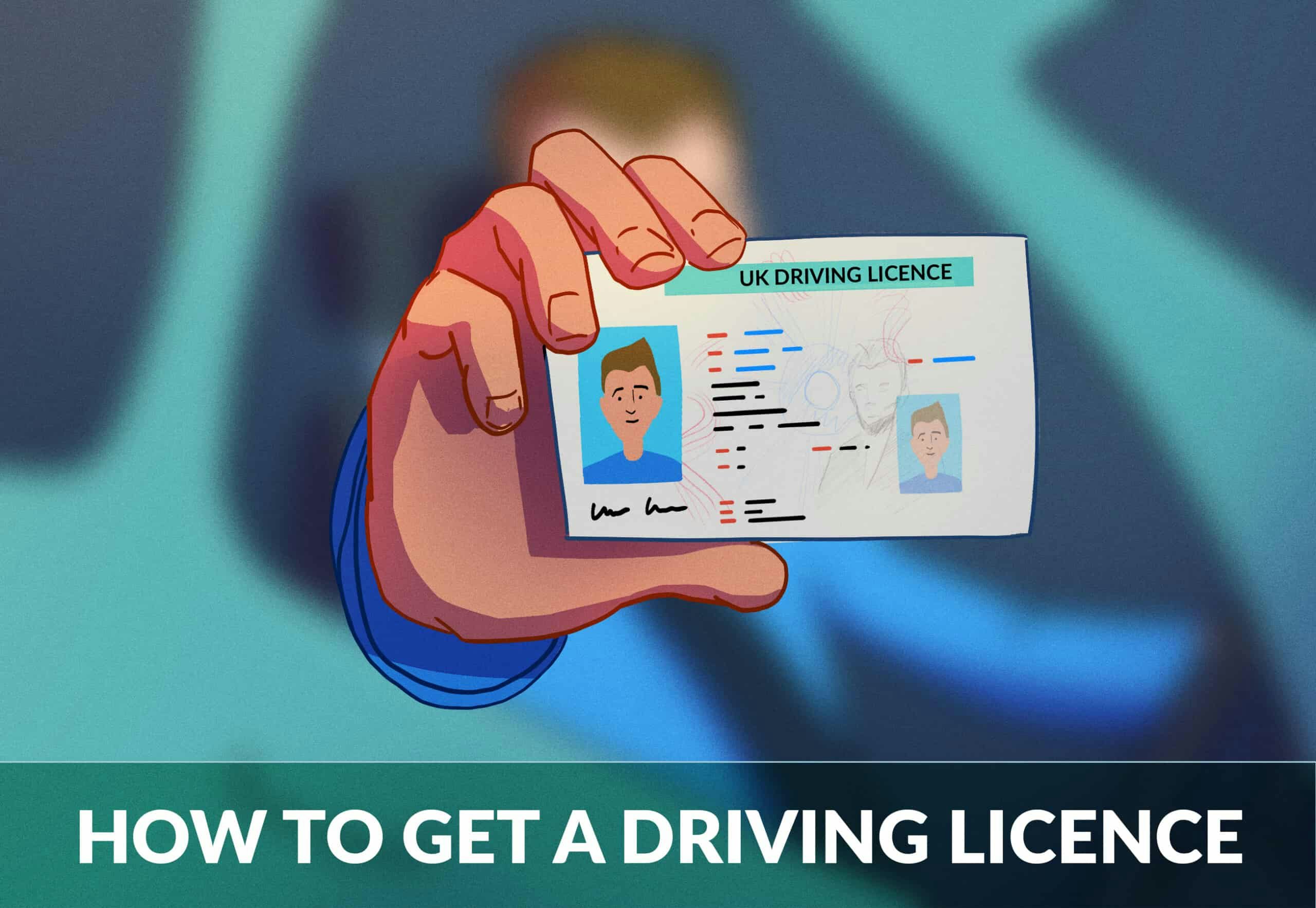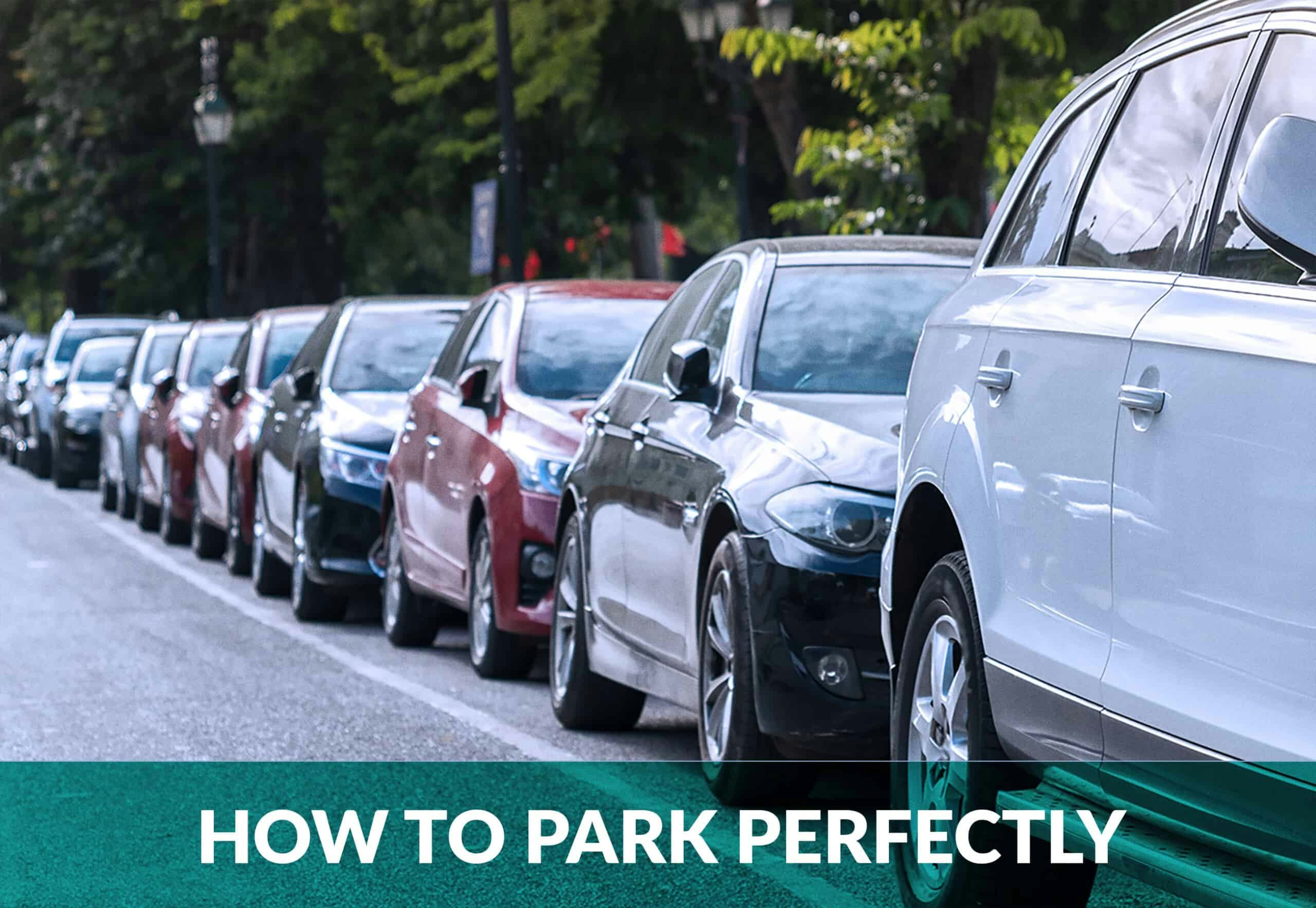
How to Park a Car Perfectly: Step-by-Step Guide
Knowing how to park a car is simply a must-know skill, but it can be a challenge if you are new to driving or not used to driving in urban areas. While you may be able to conveniently park on your driveway at home, at some point in time you will need to park your car in a number of different situations.
Parking is also a part of the practical driving test in the United Kingdom. If you don’t know how to park a car, or you find parking a challenge, this article will guide you. Today you’ll learn:
- How you find an appropriate parking spot (every parking spot is not ideal)
- How to park a car in any given situation – Angle, Parallel, and Perpendicular Parking
You’ll be parking better than your driving instructor and family members in no time!
How to Find an Appropriate Parking Space
The first step to parking a car is finding a parking space. When choosing a parking space you need to remember that:
- You need a parking space that is large enough for your car
- A large car needs a larger parking spot than a smaller car
- You need enough clearance to the sides to manoeuvre (about 1m on each side)
- Check if other cars are parked on the white line marking your parking spot as it might be too tight
- If parallel parking, you want to look for a spot that is at least 1.5x the length of your car
Also, if you can, locate an open parking space away from other cars and pedestrians. Even as you grow used to dealing with tight parking spots and pedestrians, it will still be considerably harder to park properly in tight situations compared to in open parking spaces.
How to Park – Angle, Parallel, and Perpendicular Parking
You need to learn how to park a car in the three main types of parking spaces that can be found in Australia:
- Angle Parking Spot
- Parallel Parking Spot
- Perpendicular Parking Spot
We’ll go through them all in this article.
How to Park at an Angle (Angle Parking)
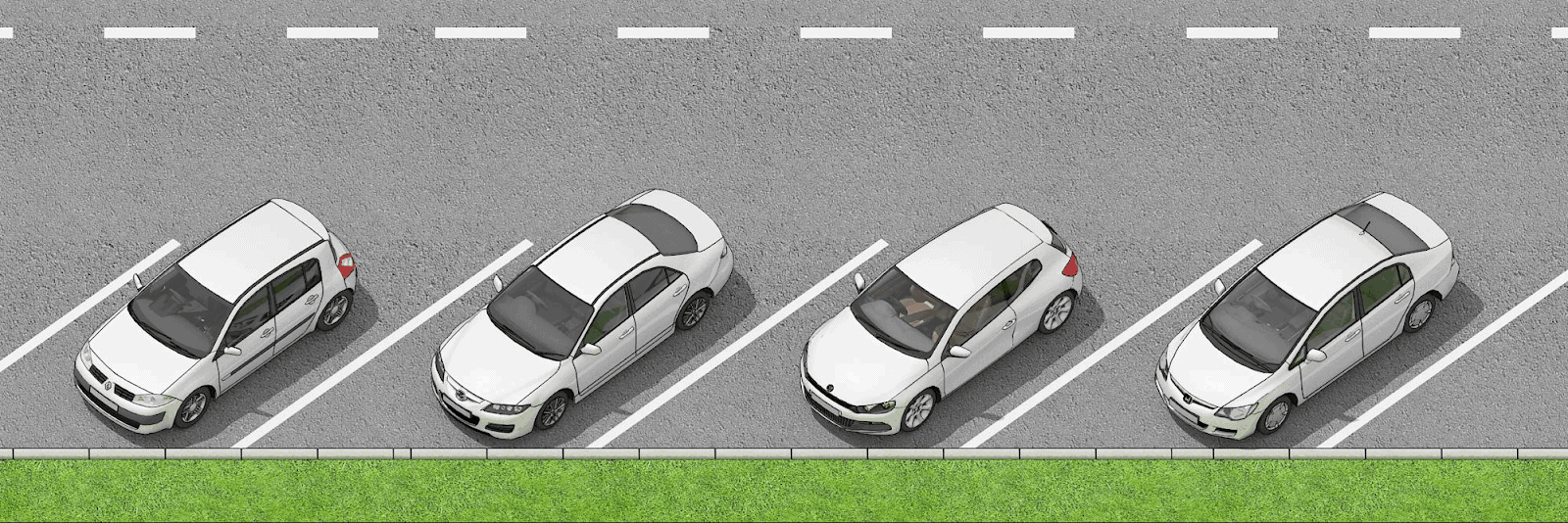
Angle parking is the most common type of parking spot found in high-traffic areas and one-way roads. The purpose of parking at an angle is that it allows the drivers to more easily access the parking spot, and more easily drive out of it. For that reason, it is also easiest to learn how to park at an angle before moving to parallel and/or perpendicular parking spots.
Angle parking is essentially parking at an angle (often 45°) to the road. The crux of an angle parking spot is to be aware of how traffic around you is behaving as you’ll most likely have limited to no vision of the road as you reverse out of the angle parking spot.
Follow these 4 steps when angle parking.
- Find a large-enough parking spot
- Drive slowly and enter at an angle
- Alight the car in the parking spot
- Open the car doors carefully
1 – Find a large-enough parking spot
The parking spot should have at least 0.5 – 1m on each side. If the parking spot is too tight, you won’t be able to open the car doors even if you can successfully squeeze in. The passengers in the cars next to you also risk slamming their car doors into your car as they attempt to enter their own cars.
2 – Drive slowly and enter at an angle
Enter the angle parking spot by entering the parking spot at an angle and slowly edging forward until your car is correctly positioned within the white lines.
3 – Align the car in the parking spot
Align your car so it is straight in the parking spot when you park your car, not before you move out.
By aligning your car and wheels as you park, you will make it easy for you to move out of the spot later. If you intend to align the car before you move out of the parking spot, you may find that the cars to your sides have changed and that you no longer have space to the sides, making the move difficult.
4 – Open the car doors carefully
As you leave your vehicle, it’s’ always good to be extra careful to not slam the car door(s) into the cars on the sides. It can easily happen and it may end up being rather costly.
How to Park Straight (Perpendicular Parking)
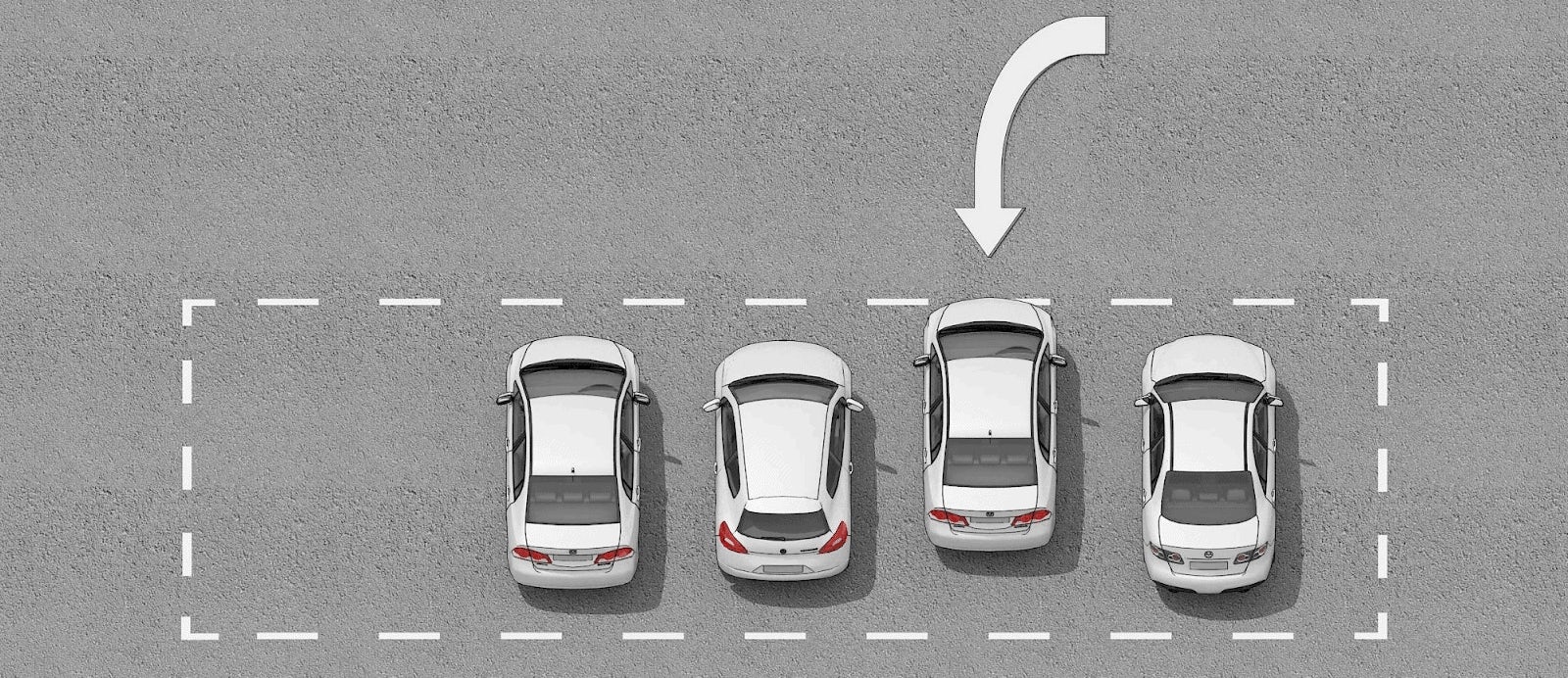
Learning how to park a car in a straight parking space is very important since it’s the second most common type of parking spot. You will often find these types of parking spots in shopping malls and parking lots associated with a store in general, so this is a good place to start if you want to learn how to park in a parking lot.
Follow these 5 steps when parking in a straight parking space.
- Find an empty parking spot
- Position your vehicle for the turn
- Slowly move into the parking space
- Adjust your position
- Turn the engine off and exit your car
1 – Find an empty parking spot
Just like when parking at an angle, you want to find a parking spot with at least 0.5-1m of space to each side. If the parking spot is too tight, you won’t be able to open the car doors even if you can successfully squeeze in.
2 – Position your vehicle for the turn
To get as much room as possible for turning, you need to place your vehicle toward the opposite side of the aisle. If the aisle allows for traffic from both directions, try to move as close to the centre of the aisle as possible.
The front bumper of your car should be approximately half a car length away from the parking spot before you begin to turn.
3 – Slowly move into the parking space
Check your mirrors, the blind spot, and watch for oncoming vehicles and pedestrians first. Then turn and move into the parking spot.
4 – Adjust your position
Once you are in the parking space, you want to make sure your vehicle is correctly aligned within the space and to vehicles parked on either side. Adjust your position until you have an even gap to both sides of your car and you are well within the parking space.
5 – Turn the engine off and exit your car
Be careful to not hit nearby vehicles with your car door as you exit your car. Before you leave the parking lot, look around one additional time for the parking signs so you will know exactly how long you may be parked and if you have to pay.
How to Parallel Park
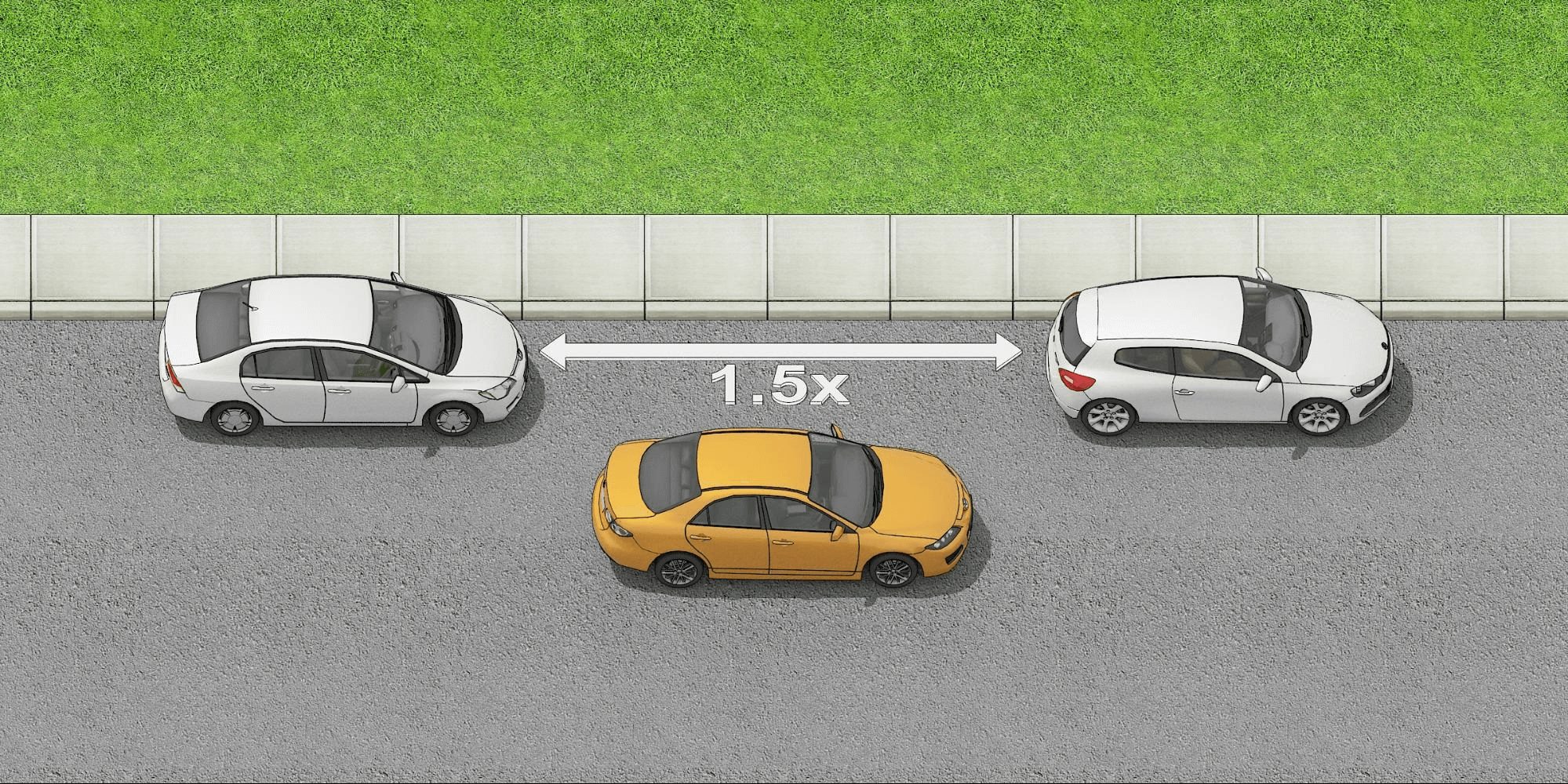
Due to the complexity of parallel parking and the multiple steps of the manoeuvre, we have already covered parallel parking in detail in another article with illustrations and pictures – and we recommend it to anyone looking for a step-by-step guide on how to parallel park.
We’ll go through a summary of the most important steps below.
- Find a large enough parking spot. The parking slot should be at least 1.5x the size of your car for you to have enough room to safely manoeuvre into the slot
- Place your car in the correct position. Align your passenger-side mirror with the side mirror of the car in front of your parking spot. Leave a gap of 0.5m.
- Turn your steering wheel fully to the left and reverse until you can see the full front of the vehicle in the parking spot behind you in your right-side mirror
- Reverse straight until your left-side mirror covers the taillight of the car in front
- Turn your steering wheel fully to the left again and carefully edge into position
Make Sure to Look Out for Pedestrians Before Reversing
If you intend to enter or leave a parking spot by reversing, be extremely careful of passing pedestrians and/or other vehicles. Children can run across your intended path at any time. Make sure to look out for pedestrians, especially children, and other vehicles before reversing into a parking spot.

550+ exam-like questions
All you need to ace your test
Free trial
Recommended articles
Ace your theory test, guaranteed
Want to Be the Top School in Your Area?
- Simple & automated admin
- More time for teaching
- #1 learning materials for students


